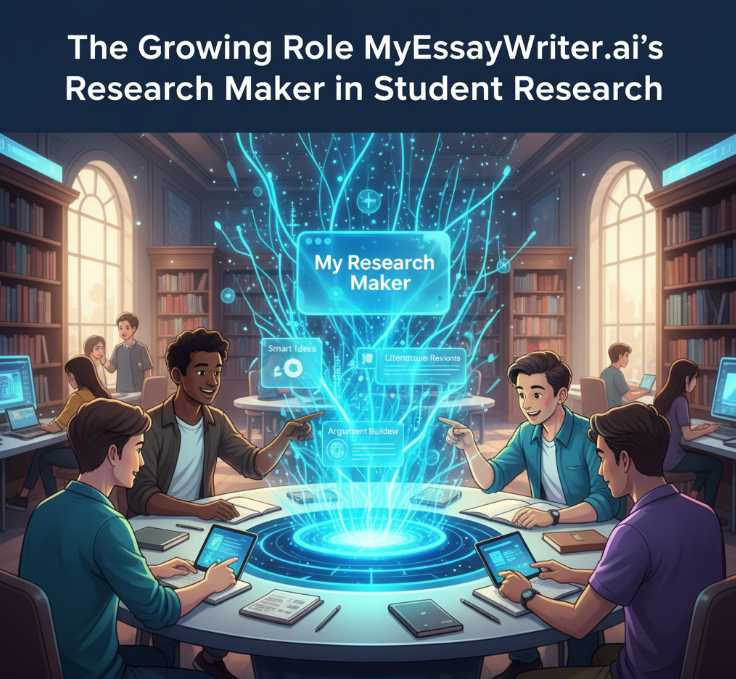Balancing the challenges of college or university life can feel like a full-time job. Between managing class schedules, preparing for exams, completing research projects, and maintaining part-time work, it’s easy to feel overwhelmed by academic pressure. Writing lengthy essays, term papers, or research projects adds another layer of stress. This is where professional online academic writing platforms like 5StarEssays.com make a real difference. As one of the best custom essay writing service providers, the platform helps students manage their workload while ensuring that the quality of their submissions remains high and academically sound.
Modern education demands consistency, critical thinking, and flawless writing. However, not all students have the same amount of time or writing expertise to meet these standards. By using a professional essay writing service, students can not only save time but also learn from expertly structured papers. These services are not about taking shortcuts, they are about enhancing understanding, supporting learning, and helping students produce their best academic work confidently.
Understanding the Role of Academic Writing Services
Academic writing platforms play an essential role in supporting students who need extra help with their assignments. Many learners face challenges such as language barriers, tight deadlines, or confusion about academic formatting and structure. Services like 5StarEssays provide access to professional writers who are well-versed in crafting essays, research papers, dissertations, and reports that align with academic standards.
For students, such services offer much-needed flexibility. Instead of staying up late stressing over complex topics or formatting errors, they can rely on experts to deliver quality work that meets their professor’s expectations. The assistance can range from brainstorming topics to complete essay writing giving students the freedom to focus on learning instead of worrying about every minor detail.
Moreover, professional essay writing services ensure that each paper is written from scratch, thoroughly researched, and properly referenced. This means students receive authentic, plagiarism-free content that they can use confidently. In today’s fast-paced academic world, the support of skilled writers helps students maintain academic excellence while managing other priorities.
Qualities That Define a Reliable Writing Service
Not all writing services online are equally trustworthy. Some promise low prices but deliver subpar or copied work. Therefore, it’s crucial to identify the traits of a reliable and professional writing service before placing an order.
A good platform like 5StarEssay stands out for several reasons. First, it employs qualified academic writers with advanced degrees who specialize in various fields from humanities to engineering. Each writer is tested for writing quality, subject expertise, and professionalism. Second, the service guarantees plagiarism-free essays, ensuring that every assignment is written uniquely based on student-provided instructions.
Another vital aspect is timely delivery. The service understands that students often work with strict academic deadlines. Therefore, whether you need your paper in three hours or three days, the team ensures punctual submissions without compromising quality. Furthermore, confidentiality and data protection are always prioritized. Students can safely order essays without worrying about privacy breaches or exposure.
In short, reliability is about trust and trust is built through consistent, transparent, and high-quality service delivery.
Diverse Writing Services Tailored for Every Need
What makes a platform like 5StarEssays.com exceptional is its wide range of academic writing services designed to meet every student’s unique requirement. Whether it’s a high school essay, a college research paper, or a doctoral dissertation, the service provides complete support.
Here’s a detailed breakdown of the services offered:
Range of Writing Services Tailored to Every Academic Need
One of the main strengths of 5StarEssays.com lies in the wide variety of writing services it offers. The platform caters to students across all academic levels from high school learners to doctoral candidates ensuring that every type of assignment is handled with precision and expertise.
For students who need help with general assignments, the essay writing service covers diverse topics across multiple disciplines. Each essay is customized according to the student’s instructions, ensuring originality, clarity, and adherence to academic standards.
Those working on complex research assignments can benefit from the research paper service, where professional writers conduct in-depth research and incorporate credible, peer-reviewed sources. This service is especially suitable for undergraduate and master’s students who need well-documented and data-backed academic content.
For students required to write about personal experiences and insights, reflective essays offer an academic yet personal writing style. These essays are carefully balanced maintaining both scholarly tone and emotional depth making them ideal for college and university students.
When it comes to persuasive or logical writing, the platform’s argumentative essay service helps students present strong, evidence-based arguments in a structured and coherent format. Writers ensure that every claim is supported by valid reasoning and scholarly references, which strengthens the overall essay.
Lastly, for advanced learners pursuing higher degrees, the dissertation and thesis writing service provides complete assistance with topic selection, research, data analysis, and writing. These papers are crafted with academic rigor and methodological accuracy, meeting the high standards expected at the Master’s and PhD levels.
By offering this comprehensive range of academic support, 5StarEssays.com ensures that students from all backgrounds can find the right help for their unique writing requirements no matter the subject or complexity.
Expert Writers with Academic and Creative Mastery
The true strength of 5StarEssays.com lies in its talented team of writers. Every writer undergoes a rigorous selection process to ensure they have the right qualifications, writing ability, and attention to detail. Most hold Master’s or PhD degrees and have extensive experience in academic writing, research, and editing.
If you’re looking for a professional descriptive essay writer, you can expect your paper to include detailed imagery, structured paragraphs, and a captivating flow. Likewise, if you request to write my reflective essay, the writer will combine personal experiences with academic reflection to produce a meaningful and insightful paper.
These writers are not just experts in English they’re specialists in their respective academic disciplines. From psychology and business to law and engineering, they understand the technical aspects of every subject. Their experience allows them to deliver papers that are both accurate and intellectually engaging, helping students achieve higher grades and deeper understanding.
A Simple, Transparent Order Process
Ordering a paper through 5StarEssays.com is designed to be simple, fast, and completely transparent. The process involves just a few steps, ensuring students can place their orders without confusion or delays.
Fill Out the Order Form: Students begin by providing details about their assignment — topic, academic level, number of pages, and deadline.
Select a Writer: Based on the topic and experience, you can review writer profiles and choose one that fits your needs.
Make a Secure Payment: All payments are made through encrypted gateways to ensure complete safety.
Track the Progress: Students can communicate directly with their writer to monitor progress and request updates.
Receive the Final Paper: Once completed, the paper is delivered before the deadline for review and submission.
This seamless process provides control, transparency, and peace of mind ensuring that every student receives exactly what they ordered.
Transparent Pricing, Ratings, and Student Feedback
Affordability is a major concern for students seeking professional help. 5StarEssays.com understands this, offering competitive prices that fit a student’s budget without sacrificing quality.
Below is a summary of the pricing structure and performance ratings:
Category | Price (Per Page) | Quality Rating | Customer Feedback |
High School Essay | $11 | ⭐⭐⭐⭐☆ | “Simple yet clear essays.” |
Undergraduate Paper | $13 | ⭐⭐⭐⭐⭐ | “Well-researched and formatted perfectly.” |
Master’s Level | $16 | ⭐⭐⭐⭐⭐ | “Exceptional analysis and critical depth.” |
Guarantees That Build Long-Term Student Trust
Trust is essential when using an online service, especially for academic work. 5StarEssays.com builds that trust through strong guarantees:
Plagiarism-Free Papers: Every assignment is original and verified through plagiarism detection software.
Free Unlimited Revisions: Students can request edits until they’re completely satisfied.
Money-Back Guarantee: Refunds are available if the delivered work doesn’t meet the agreed standards.
Confidentiality: The platform keeps personal and academic information 100% private.
24/7 Customer Support: Live chat and email support ensure assistance any time of day.
These policies make students feel secure knowing that their investment in academic help is protected and valued.
Reasons Students Prefer Professional Essay Assistance
Thousands of students prefer using professional writing services because of the stress-free experience they provide. For instance, 5StarEssays allows direct communication with writers, which means students can share feedback, request specific sources, or ask for progress updates.
Additionally, every paper includes proper formatting (APA, MLA, Harvard, or Chicago), title pages, citations, and a bibliography all at no extra cost. The speed of delivery, combined with consistent quality, makes the service ideal for students managing tight schedules.
The reliability and expertise of these writers help students not just pass their courses but excel academically.
How Professional Writing Services Support Learning
Using an academic writing service is not about avoiding hard work — it’s about learning smarter. When students receive expertly written essays, they gain valuable insight into how arguments are structured, how sources are cited, and how academic language is used effectively.
By studying these model papers, students can learn:
How to organize ideas logically.
How to use credible sources for evidence.
How to apply academic writing conventions.
How to improve clarity and coherence in their own essays
These skills become especially useful for future research and coursework. In essence, professional writing services can act as educational tools for improving writing proficiency and academic confidence.
Meeting the Standards of Academic Writing
Every paper delivered by 5StarEssays undergoes multiple layers of review to ensure accuracy and professionalism. The writers follow a systematic process that includes thorough research, critical evaluation, structured writing, and detailed proofreading.
From initial brainstorming to final editing, the focus remains on creating a paper that meets the highest academic standards. Proper grammar, logical flow, formatting, and correct citations are all key priorities.
This attention to detail ensures that every student receives a polished, ready-to-submit document that reflects academic excellence.
Comparing with the Best Legit Essay Writing Services
When evaluated alongside other best legit essay writing services, 5StarEssays.com remains ahead due to its strong balance between affordability, originality, and dependability. Unlike many platforms that outsource to unqualified freelancers, this service maintains a team of trained academic professionals who understand educational standards and ethical writing practices.
Its transparent communication, flexible deadlines, and consistent positive reviews make it one of the most trusted academic writing platforms available to students globally.
Best Essay Writing Services
According to a detailed analysis published in a guest post on Vents Magazine, some of the Best essay writing services include platforms that focus on originality, fast delivery, and quality assurance. Among them, 5StarEssays.com continues to be highlighted for its academic accuracy, expert writer pool, and strong student-focused guarantees.
The Growing Need for Essay Writing Support
The demand for professional essay help continues to grow as education becomes more competitive and demanding. Students today balance academic workloads, jobs, internships, and personal responsibilities all while striving for top grades. Services like 5StarEssays offer an effective solution to this problem by helping students save time and submit work that meets scholarly expectations.
Such assistance doesn’t replace learning; rather, it enhances it. By using these services responsibly, students can gain new insights into academic writing techniques while achieving better results in less time.
Final Thoughts
In the modern academic landscape, using a reliable essay writing service is no longer a luxury, it's a necessity for success. Platforms like 5StarEssayshave made it easier for students to achieve academic excellence without burning out.
Whether you are searching for the best custom essay writing service, need a professional descriptive essay writer, or want a specialist to write my reflective essay, this platform delivers exceptional results with precision and care. With its affordable pricing, expert team, and unwavering commitment to originality, it remains a dependable academic partner for students worldwide.
By combining professional expertise with student-friendly service, 5StarEssays.com empowers learners to focus on what truly matters for their growth, education, and long-term success.
Other Useful Resources
Is Online Essay Help Worth It? A Detailed Student Review
Mastering Academic Success with 5staressay.com and Online Essay Services
Why 5StarEssays.com Continues to Dominate the Essay Writing Service Industry in 2025/26
















